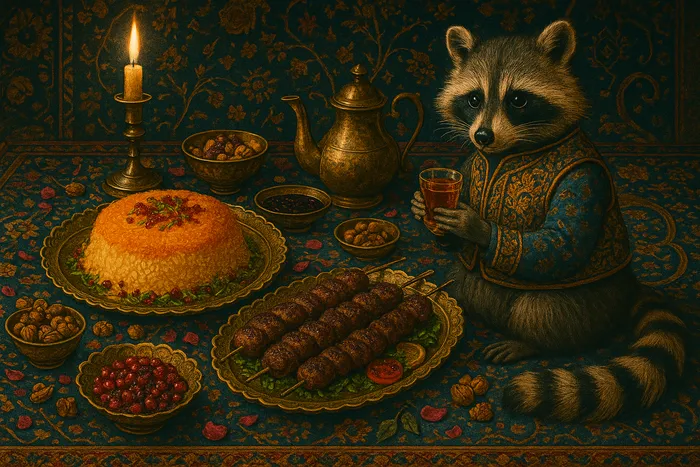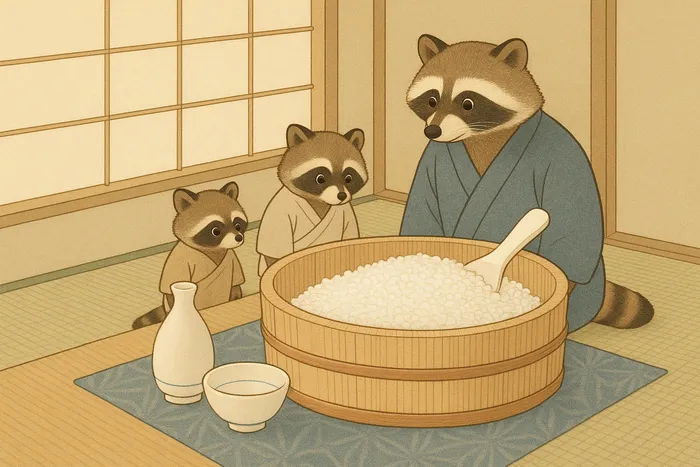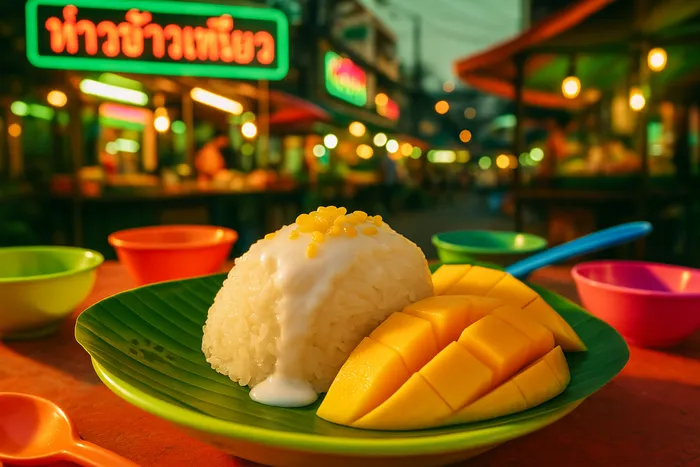main-dish
Iranian Jeweled Rice (Morasa Polo) in Cast Iron
Prep: 45 minutes
Cook: 1 hour 15 minutes
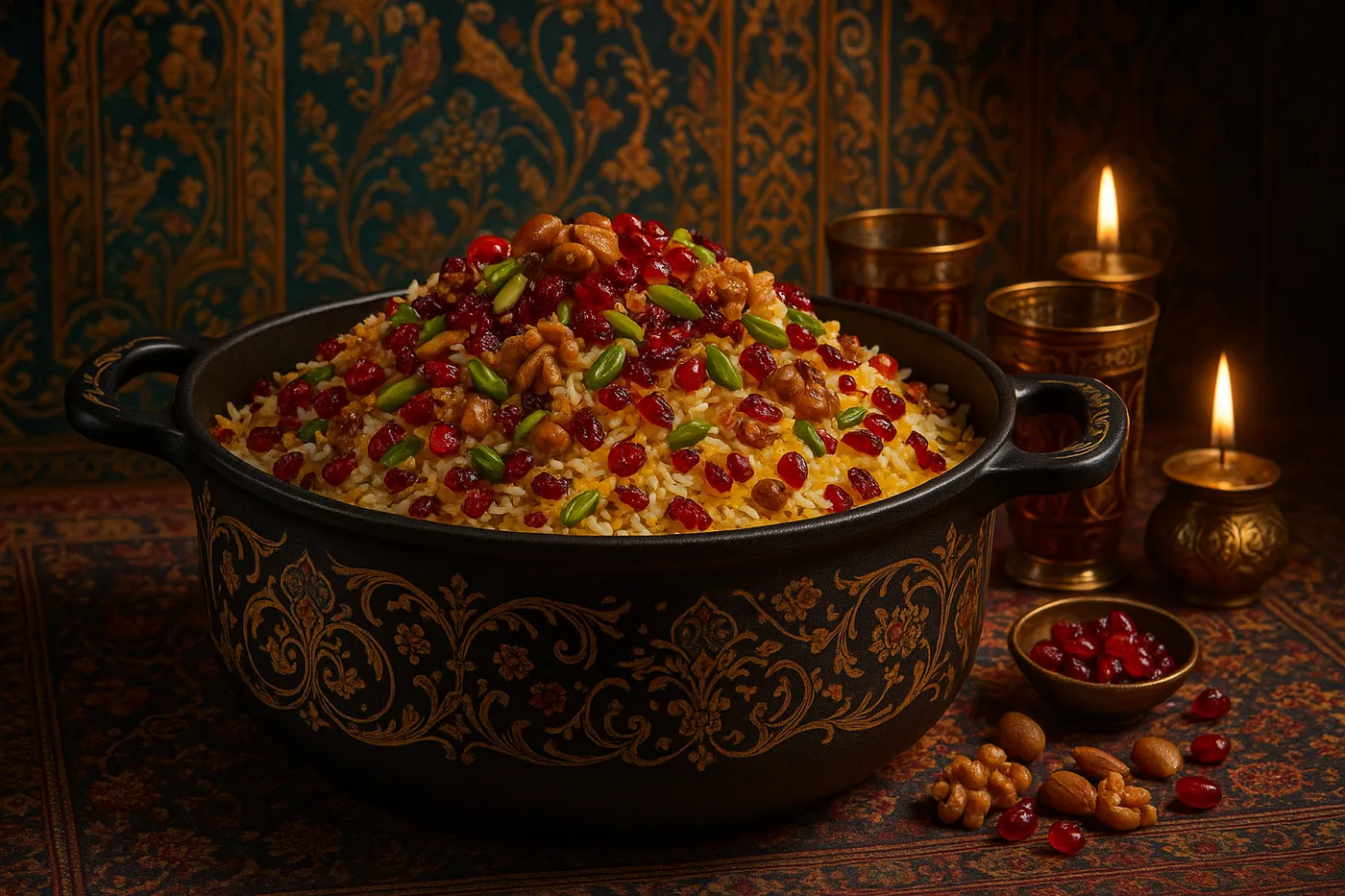
The first time I encountered jeweled rice, I was overwhelmed by its beauty before I even tasted it. Morasa Polo literally translates to "jeweled rice," and when you see it — basmati grains studded with cranberries, barberries, pistachios, and almonds — you understand why Persians save this dish for celebrations.
What drew me to making this in cast iron was watching my friend's grandmother prep it for Nowruz. She'd layer everything in her old Dutch oven, seal it tight, and let the oven work its magic. The result was rice with a golden crust on the bottom (the coveted tahdig) and perfectly steamed grains throughout. The cast iron distributes heat so evenly that you get that crispy bottom without any burnt spots.
Ingredients
🍚 3 cups basmati rice
🧂 2 tablespoons salt (for rice water)
🧈 4 tablespoons butter
🫒 3 tablespoons olive oil
🧅 1 large onion, thinly sliced
🥜 1/2 cup slivered almonds
🥜 1/2 cup pistachios, roughly chopped
🍇 1/3 cup golden raisins
🍒 1/4 cup dried cranberries
🍒 2 tablespoons barberries (zereshk), if available
🧄 3 cloves garlic, minced
🌿 1 teaspoon ground cinnamon
🌿 1/2 teaspoon ground cardamom
🌿 1/4 teaspoon saffron threads
🥛 2 tablespoons warm water
🧂 Salt and black pepper to taste
🌿 Fresh herbs for garnish (mint or parsley)
Instructions
Prepare the Rice
Rinse the basmati rice in cold water until the water runs clear — this usually takes 4-5 rinses. In a large pot, bring 8 cups of water to boil with 2 tablespoons of salt. Add the rice and cook for 6-8 minutes until just tender but still with a slight bite (it will finish cooking in the oven). Drain and set aside.
Make the Saffron Water
Crush the saffron threads between your fingers and steep them in 2 tablespoons of warm water. This golden liquid will be your secret weapon for both flavor and that gorgeous color.
Sauté the Aromatics
Preheat your oven to 350°F (175°C). In your cast iron Dutch oven (I use a 5-quart), heat 2 tablespoons each of butter and olive oil over medium heat. Add the sliced onions and cook until golden and caramelized, about 8-10 minutes. The sweetness from properly caramelized onions is crucial here.
Add the minced garlic, almonds, and pistachios. Cook for 2-3 minutes until the nuts are lightly toasted and fragrant. Stir in the dried fruits, cinnamon, and cardamom. The kitchen should smell like a Persian spice market by now.
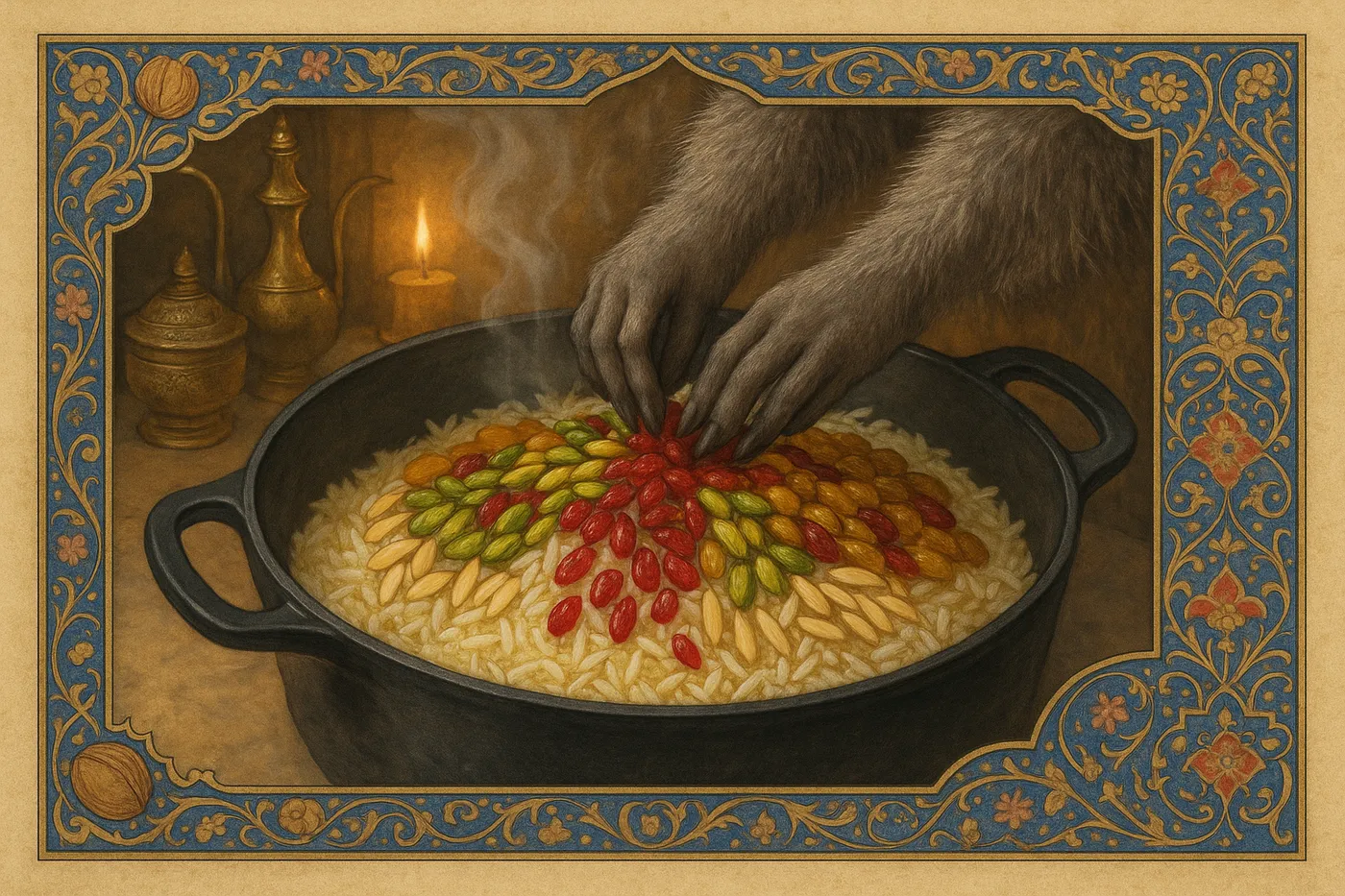
Jeweled Rice Timeline
Layer and Bake
Remove half of the onion-nut mixture and set aside. Spread the remaining mixture evenly in the bottom of your cast iron pot. Layer the partially cooked rice on top, then sprinkle the reserved onion-nut mixture over the rice. Drizzle the saffron water and remaining butter over everything.
Cover tightly with the cast iron lid (if your lid doesn't seal well, place a sheet of foil over the pot before putting the lid on). Bake for 45 minutes, then remove the lid and bake for another 15-20 minutes until the top is lightly golden.
The Tahdig Moment
Let the rice rest for 10 minutes before serving. To get the prized tahdig (crispy bottom), place the pot over medium heat on the stove for 2-3 minutes — you'll hear it start to sizzle gently. This creates that golden, crispy crust that everyone fights over.
Serving and Variations
Serve this directly from the cast iron pot — it's gorgeous enough to be your centerpiece. I like to garnish with fresh mint leaves and maybe a few extra pistachios for crunch.
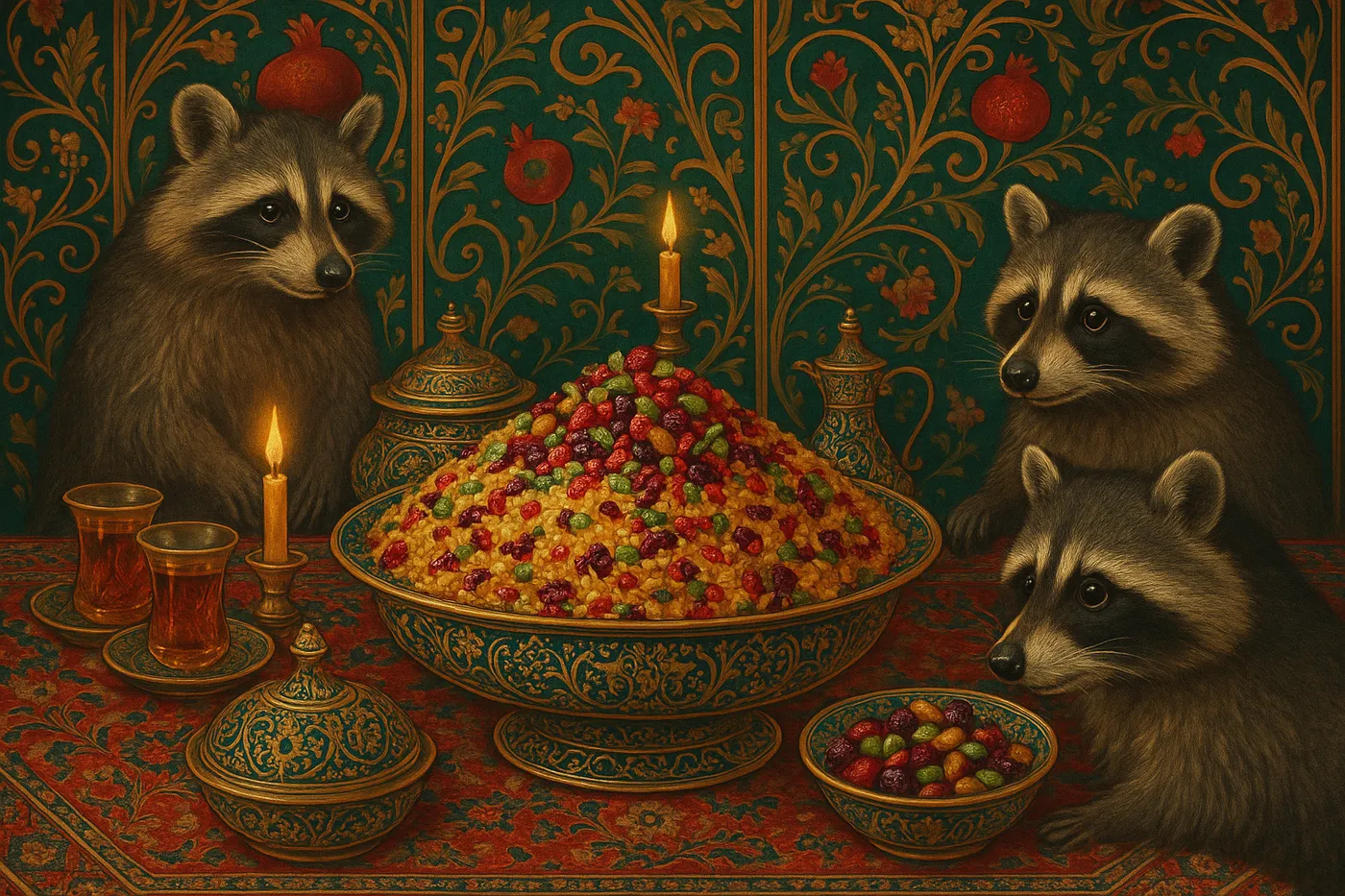
Remix Ideas:
- Add diced dried apricots or dates for extra sweetness
- Substitute pine nuts for almonds if that's what you have
- For a more savory version, add a handful of fried onions (the crispy kind from Persian markets)
- If you can't find barberries, dried cranberries work perfectly
This dish taught me that Persian cooking is all about balance — the tartness of barberries against sweet raisins, the crunch of nuts with tender rice, the aromatic spices that perfume everything without overwhelming. It's fancy enough for guests but comforting enough that I make it for myself on quiet Sunday afternoons when I want something beautiful on my table.
The cast iron method gives you restaurant-quality results at home, and honestly, once you master this technique, you'll find yourself using your Dutch oven for rice dishes all the time. The even heat and tight seal create perfect steamed rice every single time.
This recipe is part of my Rice around the world exploration — discovering how different cultures transform this simple grain into extraordinary dishes. For more about Persian culinary traditions and the art of rice cooking, check out my Iran travel notes.





